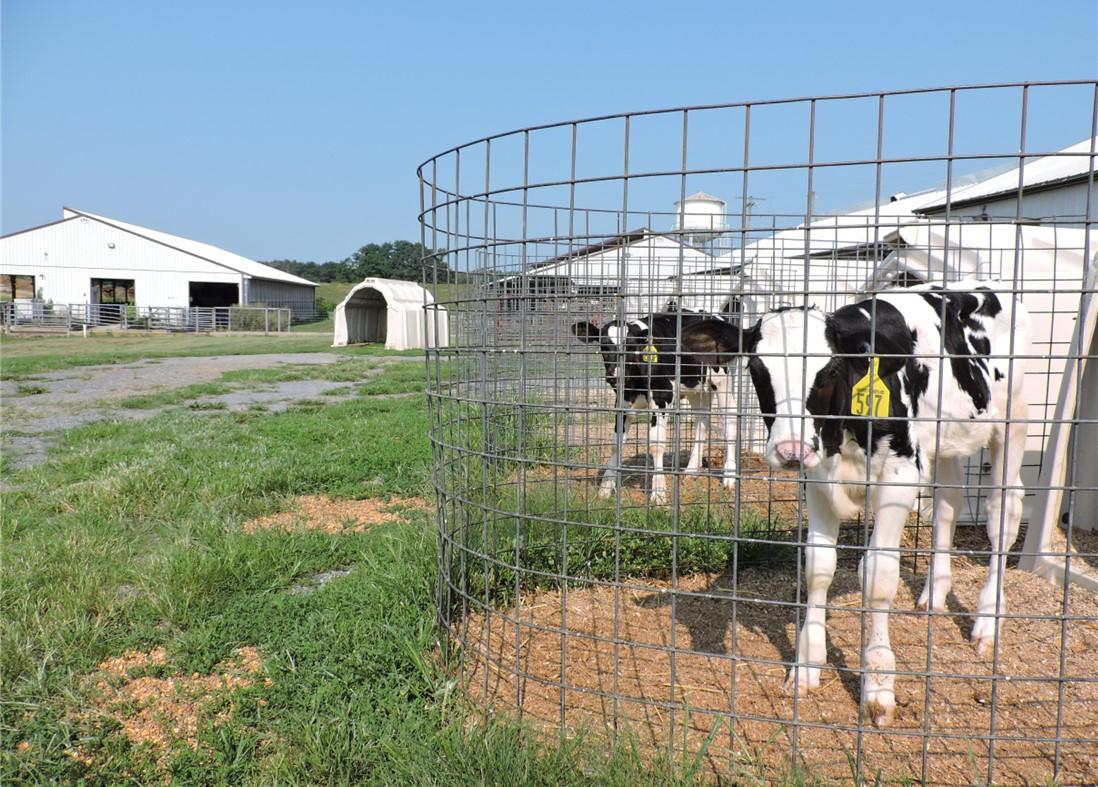Transition Milk May Benefit Dairy Calves
Most dairy producers are aware that providing calves with 3-5 quarts of high quality (>50 mg IgG/L) colostrum as soon as possible after birth is critical for ensuring transfer of passive immunity to get calves off to a good start. After the first 24 hours, many producers switch their calves to either a milk replacer or whole milk feeding regime. However, recent research suggests that there may be some benefits of feeding colostrum or transition milk for a longer period of time, even after the critical 24-hour window has passed.
Composition of Transition Milk
Transition milk refers to milk that is produced during the first 2-3 days after calving. This milk is an intermediate between colostrum and whole milk. The composition of transition milk can be highly variable, but in general, it contains more solids relative to whole milk. According to researchers at the University of Minnesota, milk from the second milking can contain 30% more fat, 170% more protein, 15% more calcium, 458% more vitamin A, and 406% more vitamin E than whole milk. Furthermore, milk from the third milking can contain 65% more protein, 15% more calcium, 232% more vitamin A, and 273% more vitamin E than whole milk.
In addition to greater nutrient content, transition milk and colostrum both contain higher levels of bioactive compounds, hormones, and growth factors. Some of these bioactive compounds are suggested to have an impact on the development of the calf gut microbiome. Others, such as insulin and insulin growth-like factor 1 (IGF-1) are suggested to improve intestinal development and nutrient absorption in young calves. Milk from milking 2 contains 3,063% more insulin and 1,513% more IGF-1 than whole milk, while milk from milking 3 contains 1,336% more insulin and 860% more IGF-1 than whole milk.
Effects on Calf Performance
Recent work conducted at Michigan State University showed that feeding transition milk to calves from day 2 through 4 can increase pre-weaning daily gains in calves. A recent international study fed calves whole milk supplemented with colostrum (7 or 14%) for 14 days to mimic transition milk feeding. Results from that study also indicated increased pre-weaning daily gains with colostrum-supplemented whole milk. They also observed an increase in pre-weaning heart girth circumference and some indications of improved respiratory health in calves fed the colostrum-supplemented whole milk as well.
Long-term effects of transition milk feeding have not been studied. However, recent studies that have examined the long-term effects of environmental conditions in utero and during early life would suggest the possibility for this practice to have long-term effects on calf performance. The increase in pre-weaning growth for calves fed transition milk or colostrum-supplemented whole milk alone would also suggest a potential long-term impact on lactation performance since higher pre-weaning growth is associated with increased milk production. Research is currently underway to evaluate potential impacts of transition milk feeding on long-term animal performance.
Putting it in Practice
For producers who are not already feeding colostrum or transition milk to calves over 24 hours old and are interested in trying this practice, producers should think carefully before jumping in with both feet.
Pasteurization of any raw milk (whole milk, waste milk, colostrum, etc.) is recommended before feeding to mitigate potential risk for disease transfer. However, many farms do not have the equipment to do this. If there are known issues with bovine leukosis or Johne’s in the herd, producers should consider carefully the possibility of increased disease transfer risk. Although it comes at a cost, research from Michigan State University suggests that supplementing milk replacer with colostrum replacer can mimic transition milk and produce similar effects on pre-weaning growth when fed from day 2 through 4. Besides minimizing the risk for disease transfer from feeding raw transition milk, this option would also ensure nutritional consistency and uniformity, and may help overcome any logistical challenges if they exist.
Lastly, although feeding transition milk has the potential to boost calf performance, it is not a substitute for good colostrum management during the first 24 hours of life. Sufficient antibody absorption is absolutely essential for developing the calf’s immune system and ensuring good health. Optimal absorption of antibodies from colostrum occurs between 0 and 6 hours after birth. At 12 hours after birth, calves can only absorb 5-10% of the antibodies in colostrum and by 24 hours, their ability to absorb these antibodies is essentially nonexistent. It is important to ensure that the colostrum management program is in good order before contemplating a new practice.
Explore Dairy Resources
